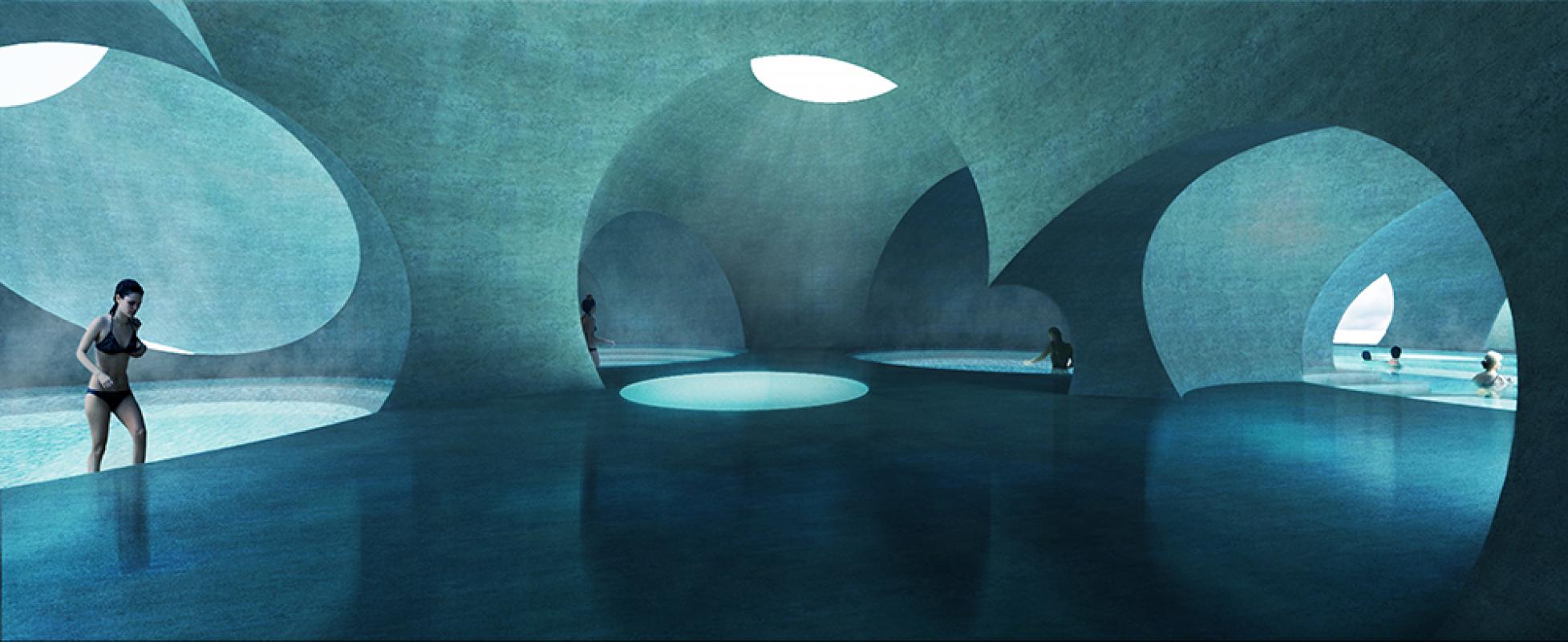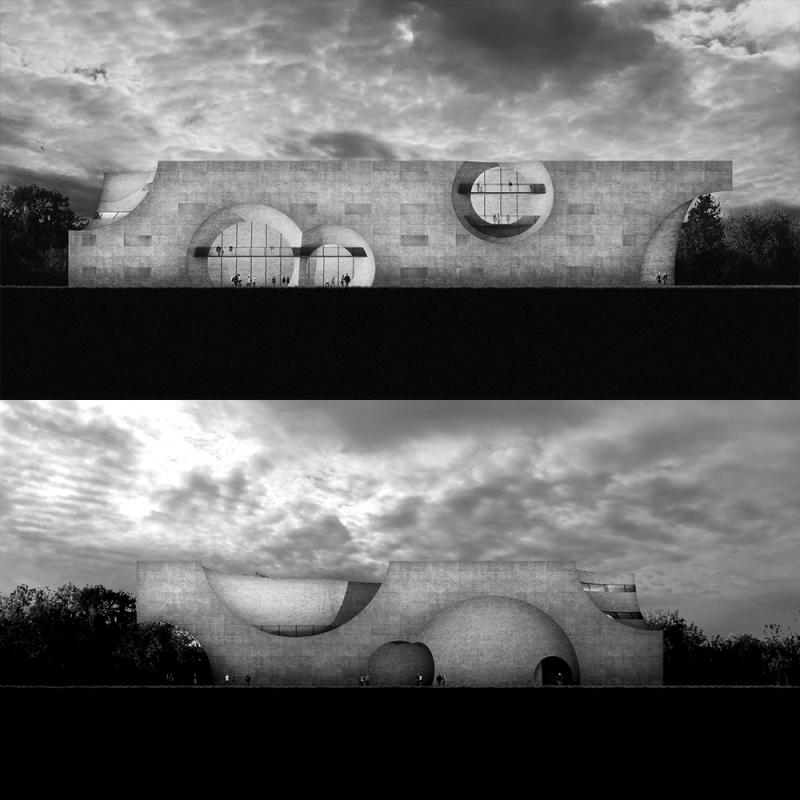Liepāja Thermal Bath
Our design for the Liepāja Thermal Bath originates from a keen interest in the formal associations of the dome throughout architectural history, and more precisely, its role within the typology of the public bath. The dome has been an important organizational and representational device throughout the history of the public bath, playing a central role in the most technologically innovative Roman bathing structures, through myriad dim and atmospheric Ottoman examples, and continuing on into countless Renaissance and Baroque precedents. The dome's semiological and organizational roles in these structures are closely aligned: by reinforcing centrality and singularity, the form renders unmistakably explicit the primacy of the circle of space directly below. The representational efficiency of the dome has made it a favorite among patrons with an interest in reinforcing the notion of a centralized and singular power system, whether that system is absolute monarchy, monotheism, hegemonic dictatorship, etc. Not surprisingly, the form acquired more than a few problematic political associations during the first part of the 20th century, and despite postmodernism's light hand with classical form, the dome has never been fully rubbed clean of its fascist tarnish. Our proposal seeks to undermine the conventional symbolic performance of the much maligned hemisphere by challenging its centripetal tendencies as well as its hierarchical bias. Working with its generative primitive, the sphere, we propose a multiplicity of domes, both upright and inverted, as a rhizomatic formal and organizational embodiment of a contemporary public that is democratic, horizontally empowered, and increasingly networked. Capitalizing on the seemingly serendipitous intersection of these friendly spherical forms, as well as the unique spaces between them within the poché, the project uses its sociopolitical conceptual foundation in service of an unorthodox spatial experience that is both spirited and atmospheric.
![[Steven Christensen Architecture - Liepāja Thermal Bath - COVER IMG]](https://architectureprizecom.s3-us-west-2.amazonaws.com/uploads/large/large_1469831979.jpg)



